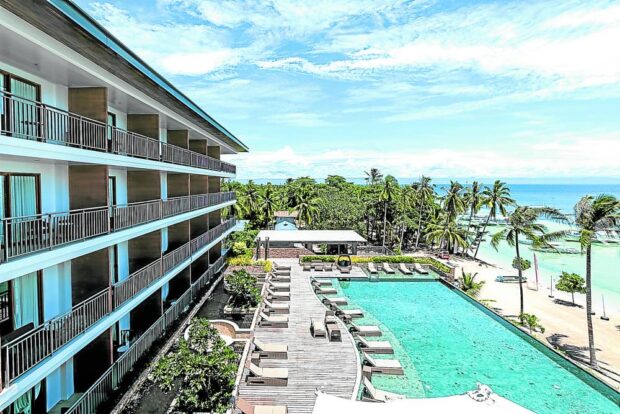
The tourism sector is establishing itself as a major job-generating sector of Philippine economy. (BERNARD SUPETRAN)
There are upsides for the Philippine economy and property sector in 2024.
Definitely, we started the year strong, but part of our mantra should be to finish stronger. While the Philippines was the fastest growing economy in Southeast Asia last year, it has yet to fully recover from pandemic disruptions. There are, however, measures and potential developments that may help reignite the Philippine property market’s recovery prospects.
Tight monetary policy, easing inflation
The Bangko Sentral ng Pilipinas (BSP) has kept its policy rate unchanged at a 16-year high of 6.5 percent, after raising interest rates by a total of 450 basis points since May 2022 to curb the impacts of high inflation. The Monetary Board however signaled that policy rates may be eased once inflation settles within the mid-range target of 3 percent.
Last month, inflation already eased to 2.8 percent—the slowest since October 2020 and is within the BSP’s target band. Analysts expect inflation to remain within the BSP’s 2 to 4 percent target range this year.
Pivot to growth areas
We are seeing tempered launches and take-up of pre-selling condominium units in Metro Manila. This can be partly attributed to elevated interest and mortgage rates as well as the large stock of ready-for-occupancy (RFO) units in the capital region.
Colliers believes that property firms should thoroughly assess the most attractive price segment for every residential submarket in Metro Manila to guide their decisions in launching new projects. At the same time, they should continue offering attractive leasing promos especially for expatriates who are returning to the traditional office setup.
More developers are thus pivoting to growth areas outside Metro Manila and launching massive masterplanned projects across major property investment destinations.
We recommend that they continue to landbank especially in areas near public infrastructure projects, such as airports and passenger railways, that are due to be completed for the remainder of the current administration. As I previously highlighted in this column, the developers’ strategies will continue to be influenced by the government’s massive infrastructure development program.
We are optimistic with the “Build, Better, More”, which should continue the gains achieved by the previous administration’s “Build, Build, Build”.

As of end 2023, average hotel occupancies in the capital region reached 65 percent from 61 percent in H1 2023. (PIXABAY VIA PEXELS)
PH tourism sustains recovery
The hospitality sector continues to recover due to holiday-induced spending in Q4 2023 and revival of in-person events. This level of optimism and enthusiasm should spill over to the summer months of 2024.
As of end 2023, average hotel occupancies in the capital region reached 65 percent from 61 percent in H1 2023—much better than the dismal 25 percent in H1 2020. Colliers projects occupancy to reach 68 percent in 2024 as we expect more foreign travelers arriving in the country despite the sizable completion of new hotel rooms in Metro Manila.
In H2 2023, we recorded the delivery of 1,797 rooms, bringing total completion in 2023 to about 2,594 rooms, lower than our forecast of 5,300 rooms as some hotels’ completion was pushed back due to construction delays especially in 2020 and 2021. The Bay Area is likely to cover for nearly half of the new supply.
The tourism sector’s share to national economic output has also been improving with the segment establishing itself as a major job-generating sector of Philippine economy. To reap the sector’s gains, Colliers recommends that developers and operators maximize the return of in-person events and business travelers; attract more tourists from the Philippines’ non-traditional source markets; and strategically align development pipeline with the government’s “Build, Better, More” initiative.

